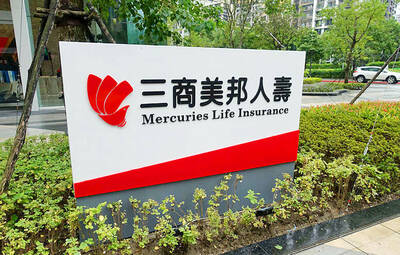Spain received a record number of foreign tourists last year, the government said on Friday, as the country’s key tourism sector made a strong rebound after years of disruption caused by the COVID-19 pandemic.
The country welcomed over 84 million visitors last year, a 19 percent jump from 2022, Spanish Minister for Industry and Tourism Jordi Hereu told a news conference, calling last year a “very positive year, a record year” for tourism.
The figure was 1 percent higher than in 2019 — the last full year before global travel restrictions imposed to tackle the pandemic grounded the tourism sector — when Spain saw 83.7 million foreign visitors — a record at the time.

Photo: EPA-EFE
International visitors spent 108 billion euros (US$117.9 billion) in Spain last year, 17 percent higher than in 2019, Hereu said, helping the economy grow faster than most of its large eurozone peers.
Spain is on track for another jump in tourist arrivals this year, he said, with projections suggesting it would receive 23.2 million foreign visitors in the first quarter — 11 percent higher than the same period a year earlier.
Spanish travel industry association Exceltur on Wednesday predicted that tourism revenues this year would surpass 200 billion euros for the first time, up from 187 billion euros last year, adding that the “perceived insecurity” in rival markets in the eastern Mediterranean such as Egypt, resulting from the Israel-Hamas war, should help drive up foreign visitors to Spain in winter.
Spain is the world’s second-most visited country after France, and tourism is crucial for its domestic economy, comprising 12.8 percent of GDP last year, Exceltur figures show.

France cannot afford to ignore the third credit-rating reduction in less than a year, French Minister of Finance Roland Lescure said. “Three agencies have downgraded us and we can’t ignore this cloud,” he told Franceinfo on Saturday, speaking just hours after S&P lowered his country’s credit rating to “A+” from “AA-” in an unscheduled move. “Fundamentally, it’s an additional cloud to a weather forecast that was already pretty gray. It’s a call for lucidity and responsibility,” he said, adding that this is “a call to be serious.” The credit assessor’s move means France has lost its double-A rating at two of the

AI BOOST: Although Taiwan’s reliance on Chinese rare earth elements is limited, it could face indirect impacts from supply issues and price volatility, an economist said DBS Bank Ltd (星展銀行) has sharply raised its forecast for Taiwan’s economic growth this year to 5.6 percent, citing stronger-than-expected exports and investment linked to artificial intelligence (AI), as it said that the current momentum could peak soon. The acceleration of the global AI race has fueled a surge in Taiwan’s AI-related capital spending and exports of information and communications technology (ICT) products, which have been key drivers of growth this year. “We have revised our GDP forecast for Taiwan upward to 5.6 percent from 4 percent, an upgrade that mainly reflects stronger-than-expected AI-related exports and investment in the third

Mercuries Life Insurance Co (三商美邦人壽) shares surged to a seven-month high this week after local media reported that E.Sun Financial Holding Co (玉山金控) had outbid CTBC Financial Holding Co (中信金控) in the financially strained insurer’s ongoing sale process. Shares of the mid-sized life insurer climbed 5.8 percent this week to NT$6.72, extending a nearly 18 percent rally over the past month, as investors bet on the likelihood of an impending takeover. The final round of bidding closed on Thursday, marking a critical step in the 32-year-old insurer’s search for a buyer after years of struggling to meet capital adequacy requirements. Local media reports

RARE EARTHS: The call between the US Treasury Secretary and his Chinese counterpart came as Washington sought to rally G7 partners in response to China’s export controls China and the US on Saturday agreed to conduct another round of trade negotiations in the coming week, as the world’s two biggest economies seek to avoid another damaging tit-for-tat tariff battle. Beijing last week announced sweeping controls on the critical rare earths industry, prompting US President Donald Trump to threaten 100 percent tariffs on imports from China in retaliation. Trump had also threatened to cancel his expected meeting with Chinese President Xi Jinping (習近平) in South Korea later this month on the sidelines of the APEC summit. In the latest indication of efforts to resolve their dispute, Chinese state media reported that